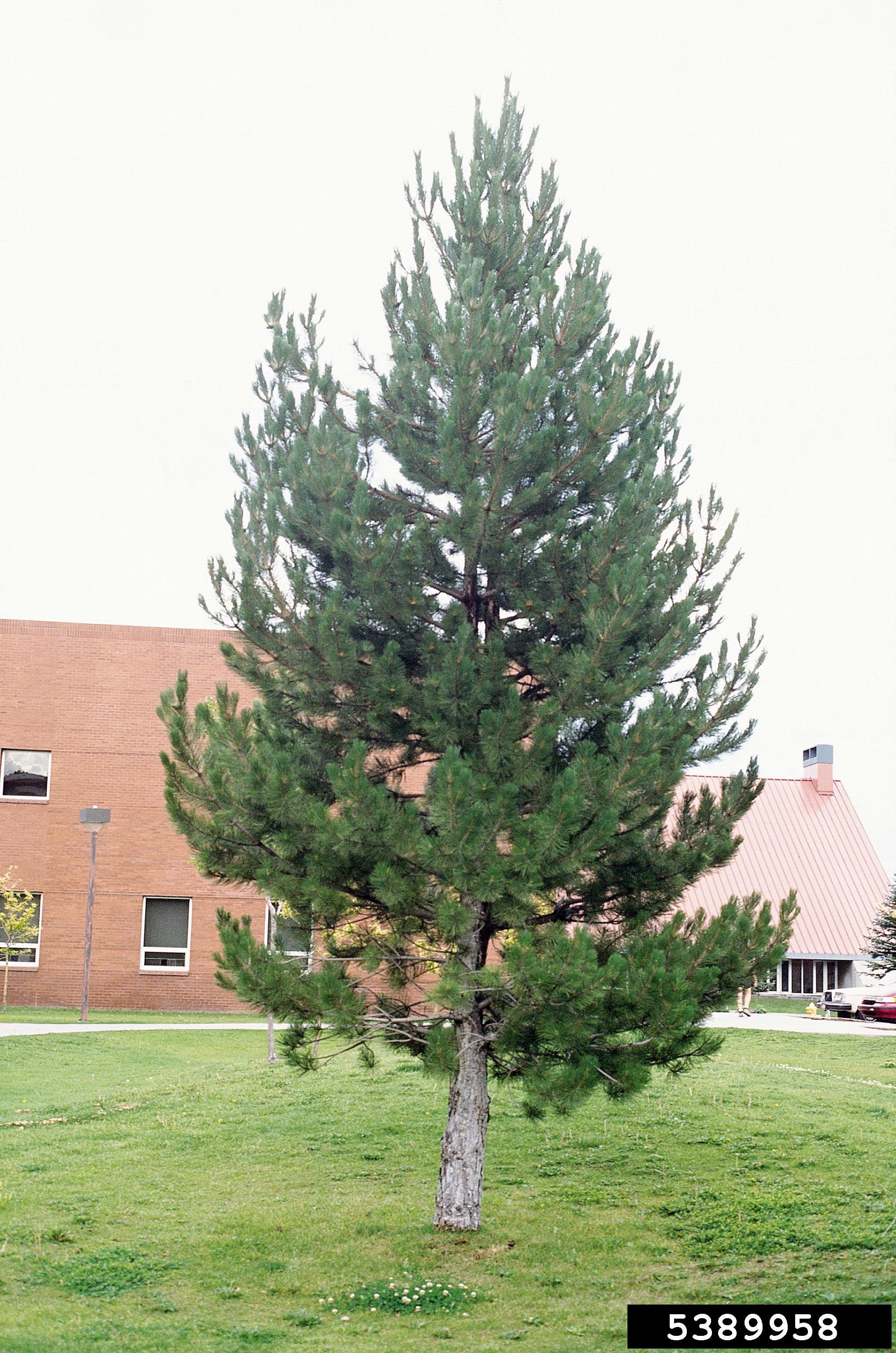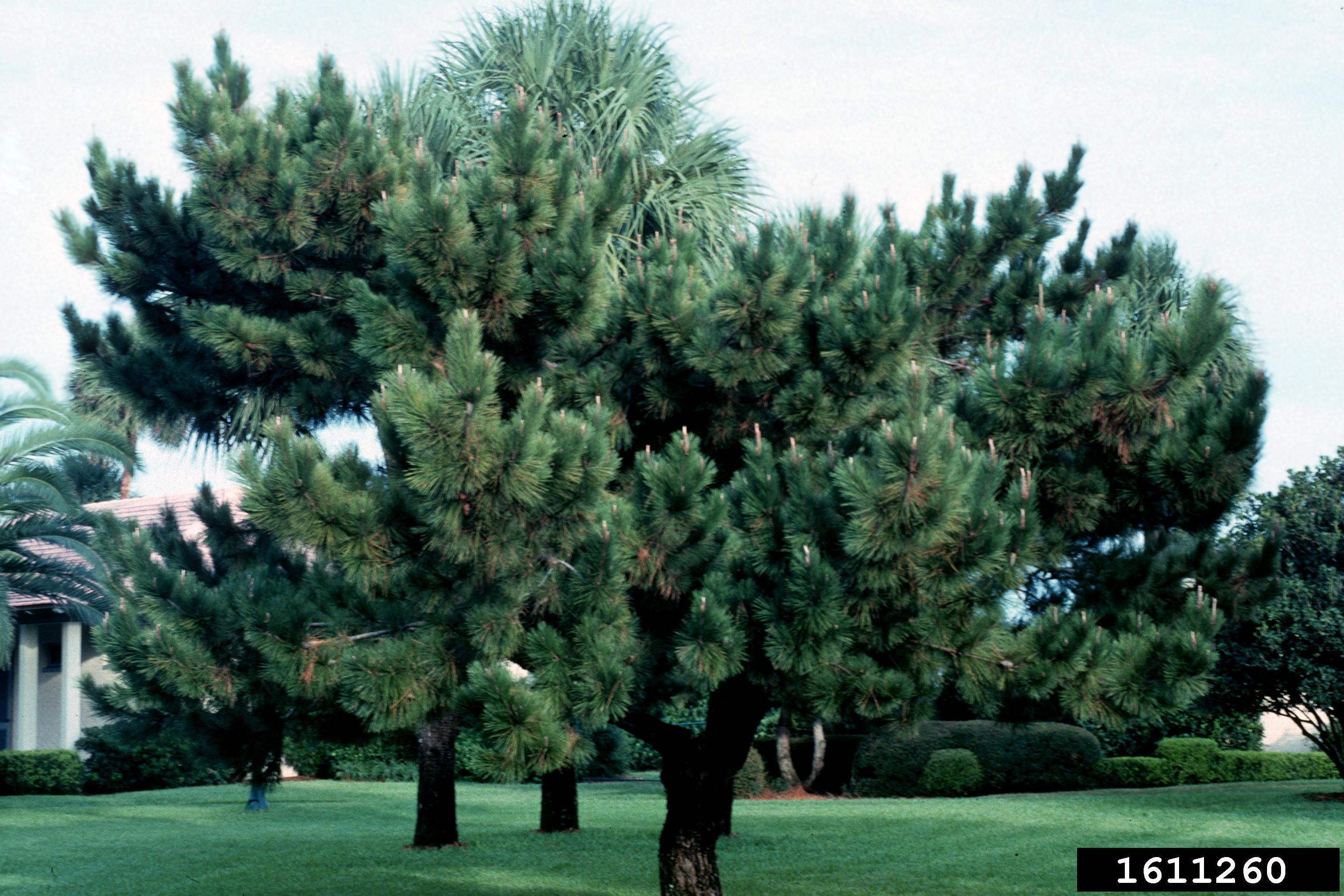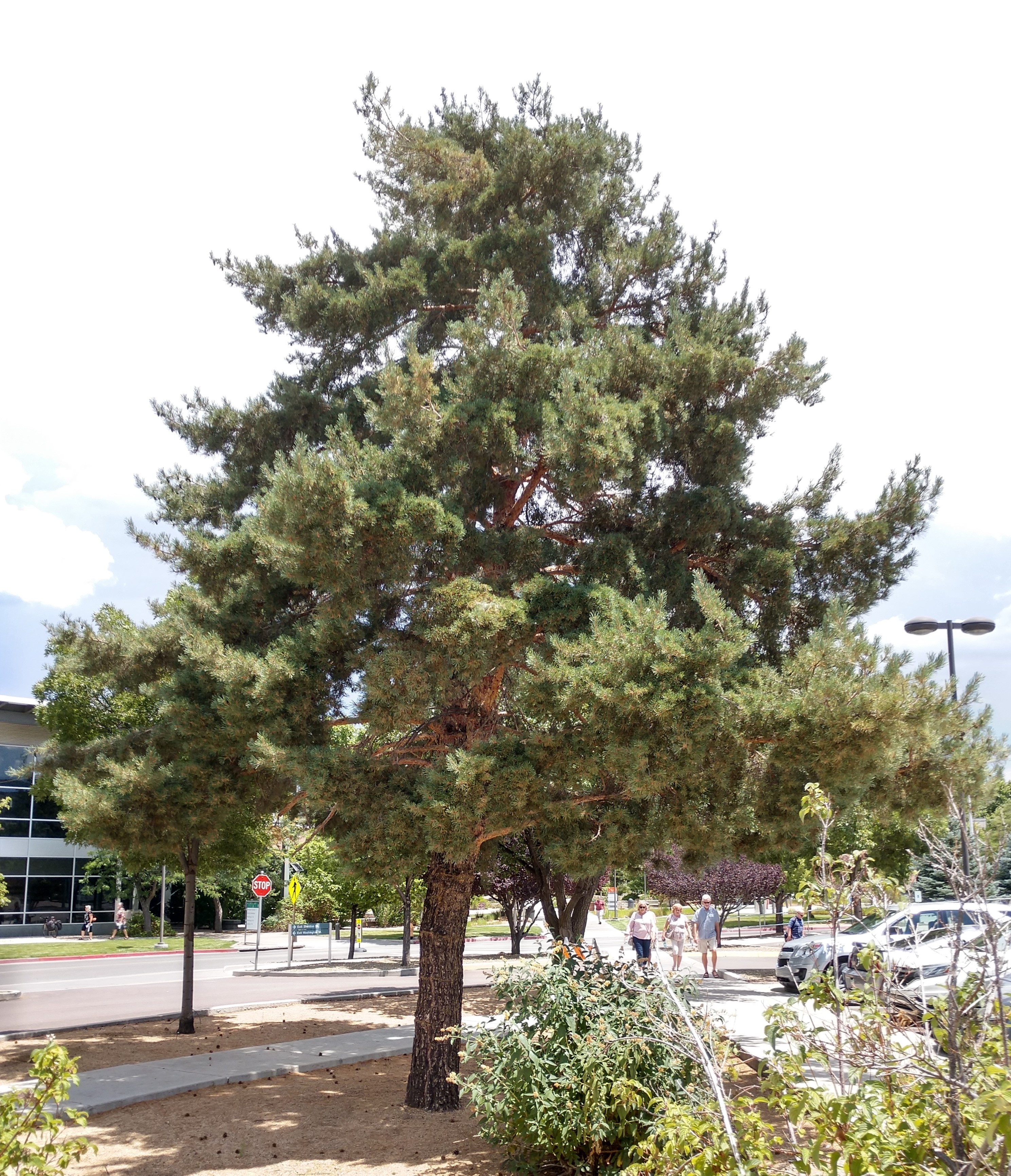 Non-Native Conifers for Landscapes - July 31, 2019 Jeff Schalau, Agent, Agriculture & Natural Resources University of Arizona Cooperative Extension, Yavapai County Coniferous trees are resinous evergreens that bear their seeds in cones rather than true flowers. A conifer is also called a “gymnosperm” meaning naked seed. Examples are pine, fir, juniper, cedar, cypress, larch, and tamarack. Several conifers are suitable for planting in the mid- to high-elevation areas of northern Arizona and fall is the best season to plant them. They can be planted as specimen trees for accent/interest or used as a privacy screen or windbreak. Remember that some of these trees are very large and may be unsuitable for small residential settings. However, many compact and pendulous cultivars are available and these are better suited to small spaces. Austrian (Black) Pine (Pinus nigra) can grow to 50 ft tall and 30 ft wide with medium length (3”-6” long) needles. It is suitable for Sedona and Prescott. Lower elevations are hotter and less favorable for Austrian pines. The bark of the main trunk and branches is often gray-brown or sometimes almost black. Elderica Pine (Pinus elderica) can grow to 40 ft tall and 20 ft wide if grown in a protected area or a dense stand. It is an excellent pine for lower elevation areas. It is susceptible to Comandra Blister Rust which has killed most those planted in Sedona and Prescott. Japanese Black Pine (Pinus thunbergii) has a spreading habit (20 ft tall/20 ft wide) and often takes on a “windswept” growth form. One of the few conifers that tolerates pruning and is suitable for planting in irrigated landscapes. Scotch Pine (Pinus sylvestrus) can grow to 50 ft tall and 30 ft wide. This medium to slow growing tree is suitable for residential landscapes. It has relatively short needles and often has orange, flaky bark on the upper trunk and large branches. It is suitable for Sedona and Prescott. Lower elevations are hotter and less favorable for Scotch pines. Deodar Cedar (Cedrus deodara) is a large (80 ft high/40 ft wide), fast growing tree. In fact, it may be too large for many residential landscapes. Short, silvery-green needles are 1 ½ inches long and occur in rosettes. They are graceful, pest resistant, and drought tolerant once established. They are also distinguishable at a distance by their droopy tops which straighten as they grow. Atlas Cedar (Cedrus atlantica) is a smaller, more upright version of the Deodar cedar, but can grow to 50 ft high/30 ft wide. It is also drought tolerant and pest resistant. There are cultivars of Cedrus which include dwarf, pendulous, and horizontal growth habits. Junipers are available in many cultivated varieties which can be difficult to distinguish. Juniper trees rarely grow taller than 30 feet and 30 feet wide. Like cypress, they have scale-like leaves. They tend to be very drought tolerant and come in a range of colors and growth forms. Hollywood juniper (Juniperus chinensis ‘Torulosa’) is a small landscape tree with an interesting, twisted growth form. Spartan juniper (J. chinensis ‘Spartan’) is also a suitable landscape tree and is often used to replace Leyland cypress. Eastern red cedar (J. virginiana) is an upright tree and was widely planted in the past, but not as popular today. Blue Spruce (Picea pungens) can grow to 80 ft high/30 ft wide in cooler, high elevation areas. The blue-gray needles are sharp and about one-inch long. The blue color is due to a waxy coating on the leaves. Climate change seems to be having some impact on these trees in Yavapai County as I have seen several established specimens die for no apparent reason. Leyland Cypress (Cupressocyparis leylandii) is a hybrid between Alaska yellow cedar and Monterey cypress. Leyland cypress is no longer recommended because it is very susceptible Seiridium Canker: a fungal disease that eventually kills the tree. Coniferous evergreen trees can drip sticky pitch and tend to drop cones, needles, twigs, and other debris causing some people to consider them messy. Remember to irrigate conifers during dry periods as they still require water to conduct photosynthesis. Conifers are also very resinous which also makes them highly flammable and should not be planted close to your home or other flammable structures. Additional resources are included below. You can follow the Backyard Gardener on Twitter – use the link on the BYG website. If you have other gardening questions, call or email the Master Gardener help line in the Prescott (928-445-6590/prescottmg@gmail.com) or Camp Verde (928-554-8992/verdevalleymg@gmail.com) and be sure to include your name, address and phone number. Find past Backyard Gardener columns or provide feedback at the Backyard Gardener web site: http://cals.arizona.edu/yavapai/anr/hort/byg/. Photos  Austrian pine tree on Northern Arizona University Campus in Flagstaff, Arizona (Pinus nigra, Tom DeGomez, University of Arizona, Bugwood.org ).
Austrian pine tree on Northern Arizona University Campus in Flagstaff, Arizona (Pinus nigra, Tom DeGomez, University of Arizona, Bugwood.org ). Japanese black pine tree (Pinus nigra, John Ruter, University of Georgia, Bugwood.org).
Japanese black pine tree (Pinus nigra, John Ruter, University of Georgia, Bugwood.org). Scotch (Scots) pine at Yavapai College Campus in Prescott, Arizona (Pinus sylvestrus, Jeff Schalau, University of Arizona).
Scotch (Scots) pine at Yavapai College Campus in Prescott, Arizona (Pinus sylvestrus, Jeff Schalau, University of Arizona). Atlas cedar at the Yavapai County Courthouse Square in Prescott, Arizona (Cedrus atlantica, Jeff Schalau, University of Arizona).
Atlas cedar at the Yavapai County Courthouse Square in Prescott, Arizona (Cedrus atlantica, Jeff Schalau, University of Arizona).Additional Resources Pines of Arizona, University of Arizona Cooperative Extension extension.arizona.edu/sites/extension.arizona.edu/files/pubs/az1584.pdf This reference includes information about Elderica, Austrian, and Japanese Black Pine. Austrian Black Pine, University of Arkansas Cooperative Extension Service www.uaex.edu/yard-garden/resource-library/plant-week/austrian-black-pine.aspx Scotch Pine, University of Arkansas Cooperative Extension Service www.uaex.edu/yard-garden/resource-library/plant-week/pine-scotch-7-18-14.aspx Deodar Cedar, University of Arkansas Cooperative Extension Service www.uaex.edu/yard-garden/resource-library/plant-week/deodara-cedar.aspx Blue Atlas Cedar, University of Arkansas Cooperative Extension Service www.uaex.edu/yard-garden/resource-library/plant-week/blue-atlas-cedar.aspx Junipers in the Landscape, North Carolina State University Extension content.ces.ncsu.edu/junipers-in-the-landscape Colorado Blue Spruce, University of Nebraska - Lincoln Extension communityenvironment.unl.edu/colorado-blue-spruce Seiridium Canker of Leyland Cypress, Backyard Gardener, Jeff Schalau, University of Arizona Cooperative Extension cals.arizona.edu/yavapai/anr/hort/byg/archive/seiridiumcanker2018.html |